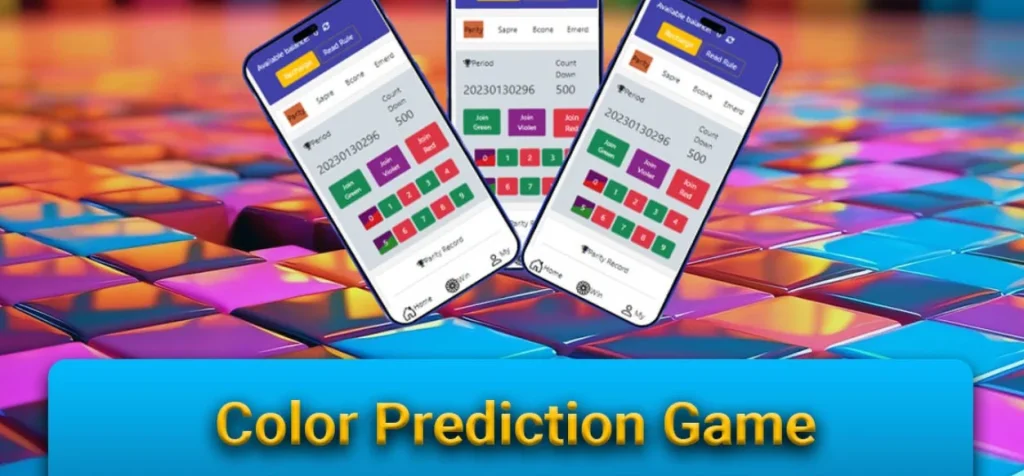Color prediction apps have surged in popularity due to their simple gameplay and engaging user experience. These apps attract a diverse audience, ranging from casual gamers to competitive players, all drawn by the thrill of predicting color outcomes. Behind the scenes, these apps operate intricate revenue models that sustain their growth and profitability. Understanding these revenue streams offers insight into how developers monetize user engagement effectively.
Core Gameplay Mechanics Driving User Engagement
At the heart of any color prediction app is its gameplay, which is designed to encourage frequent interaction. Players predict outcomes based on color sequences, often wagering virtual or real currency. This mechanic is central to generating consistent user activity, which forms the basis for monetization.
By structuring games with varying difficulty levels, time constraints, and reward systems, apps keep players invested. The retention strategies embedded within gameplay directly influence revenue potential by maximizing session length and repeat visits.
In-App Purchases as a Primary Revenue Source
In-app purchases represent a significant portion of revenue for color prediction apps. Players can buy virtual currency, power-ups, or extra attempts to enhance their chances or extend playtime. These purchases provide immediate income and encourage ongoing spending.
Apps often use psychological incentives such as limited-time offers, tiered pricing, and rewards for bulk purchases to stimulate transactions. This monetization approach caters to both casual spenders and “whales,” the small percentage of users who contribute disproportionately to revenue.
Advertising Revenue and Its Integration
Advertising is another critical revenue stream. Color prediction apps typically incorporate various ad formats, including banner ads, interstitial ads, rewarded videos, and native ads. Rewarded videos are particularly effective, offering players in-game bonuses in exchange for watching advertisements.
Balancing ad frequency and user experience is essential. Overloading users with ads risks driving them away, while well-integrated ads can enhance engagement and revenue without disrupting gameplay. Advertisers benefit from targeted audiences, making these apps attractive platforms for ad placements.
Subscription Models and Premium Features
Some color prediction apps offer subscription plans that provide premium features such as ad-free gameplay, exclusive content, or enhanced analytics. Subscriptions create a steady revenue stream and foster user loyalty.
Offering tiered subscription levels allows apps to cater to different user preferences and budgets. Premium users often receive perks that improve their gaming experience, incentivizing free users to upgrade over time.
Transaction Fees and Commission Structures
For apps that enable real-money wagering or cash-outs, transaction fees form an important revenue component. Platforms like daman game colour prediction may charge a percentage on deposits, withdrawals, or winnings, ensuring a share of every financial exchange.
These commissions must be balanced to remain competitive and fair, encouraging user trust and continued participation. Transparent fee structures help maintain a healthy user base and reduce churn.
Partnerships and Affiliate Marketing Opportunities
Color prediction apps sometimes collaborate with third-party companies through partnerships and affiliate marketing. These arrangements can include promoting other games, products, or services within the app in exchange for a commission.
Such partnerships diversify revenue sources and can introduce users to complementary offerings, enhancing overall platform value. Strategic collaborations also aid in marketing and user acquisition efforts.
Data Monetization and Analytics
User data collected through app interactions holds significant value. Analyzing player behavior, preferences, and spending patterns allows developers to optimize monetization strategies and personalize experiences.
In some cases, anonymized data is aggregated and sold to market researchers or advertisers, creating an additional revenue channel. However, this approach requires strict adherence to privacy regulations to protect user information.
User Acquisition Costs and Return on Investment
Effective monetization depends on balancing user acquisition costs (UAC) with lifetime value (LTV). Marketing campaigns, influencer partnerships, and app store optimization efforts aim to attract new players.
Monitoring the return on investment from these efforts ensures that the revenue generated from users exceeds the cost of acquiring them. Optimizing this ratio is key to scaling the app sustainably.
Challenges in Monetizing Color Prediction Apps
Despite multiple revenue streams, monetizing color prediction apps presents challenges. Regulatory restrictions on gambling or wagering can limit certain income sources. Player fatigue or competition from similar apps may reduce engagement over time.
Maintaining transparency and fairness is crucial to retain user trust and prevent negative publicity. Developers must continuously innovate and adapt their revenue models to evolving market conditions and user expectations.
Future Trends in Revenue Models
The revenue models of color prediction apps are evolving with technological advancements. Integration of blockchain for secure transactions, use of NFTs for unique in-game assets, and AI-driven personalization are emerging trends.
These innovations promise new monetization opportunities and enhanced user experiences. Adapting to these trends will be critical for developers seeking to remain competitive in a crowded market.
Conclusion: The Complexity Behind Simple Gameplay
While color prediction apps may appear straightforward on the surface, their revenue models are complex and multifaceted. Combining in-app purchases, advertising, subscriptions, transaction fees, partnerships, and data monetization allows these apps to generate substantial income.
Sustaining profitability requires balancing user experience with effective monetization strategies, adapting to regulatory landscapes, and leveraging emerging technologies. Understanding these revenue dynamics offers valuable insight into the business of color prediction apps and their place in the broader gaming industry.

